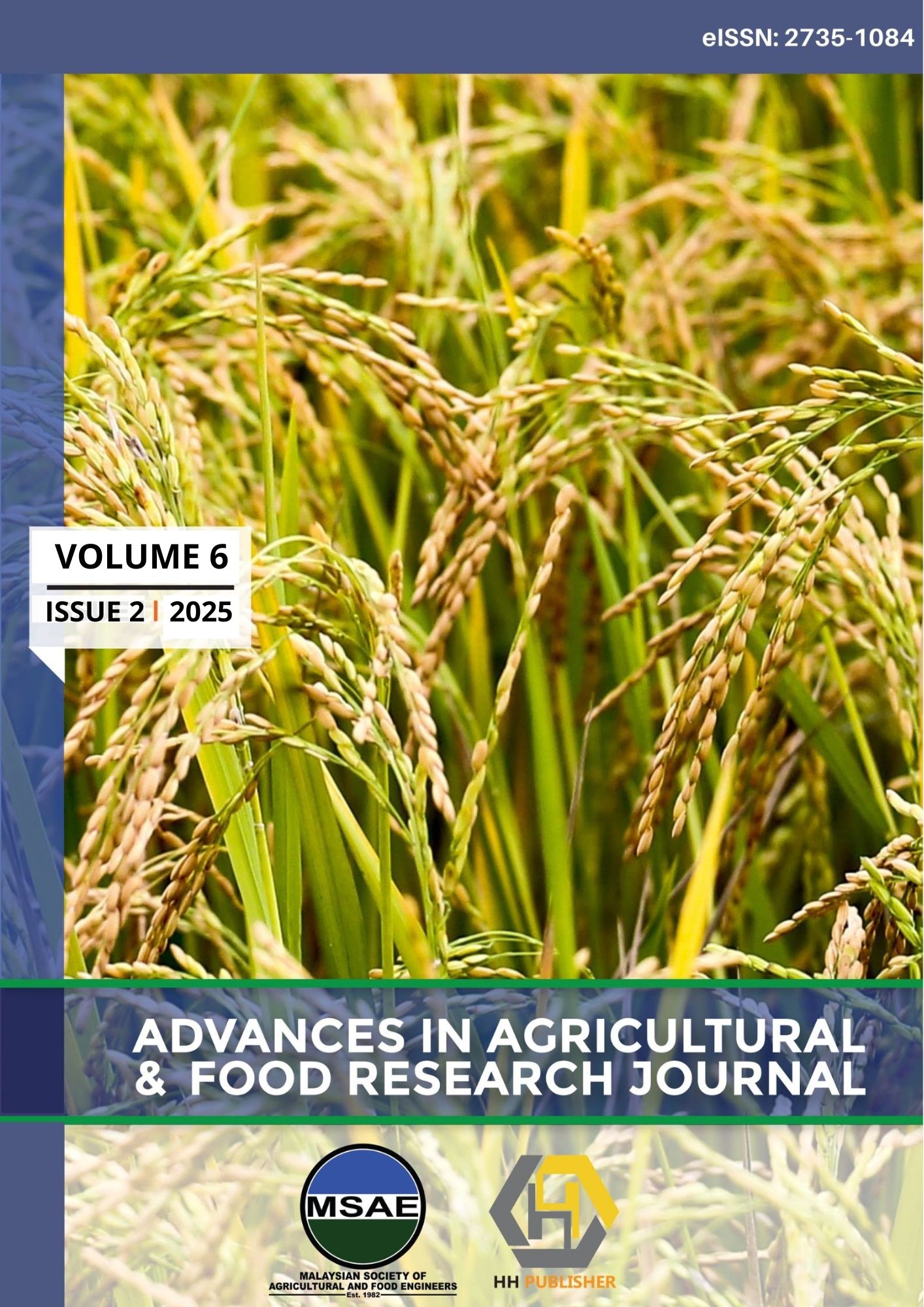Foam Reduction in Aerobic Digestion of Food Processing Wastewater using Surfactants
DOI:
https://doi.org/10.36877/aafrj.a0000569Abstract
The aerobic digestion of food processing wastewater (FPW) with high fat, oil, and grease (FOG) and protein concentration produces foam. It diminishes treatment efficiency and raises several operational concerns. Surfactants have anti-foaming properties. This study investigates the properties of raw and pre-treated FPW (PFPW) from a food processing factory. The FOG critical point for foam formation was also examined, as well as the impact of chemical and biosurfactants on foam reduction and selected wastewater quality. In aerobic digestion, the FOG critical point for foam production was determined by gradually increasing the diluted FPW FOG input. The chemical surfactants employed were linear alkylbenzene sulfonate and sodium dodecyl sulphate. Rhamnolipid (RL) and tea saponin (SP) were used as biosurfactants in the diluted FPW. Raw FPW and PFPW showed significant COD concentration reductions of 15.1 and 4.49 g/L, respectively. Treatment of raw FPW removed considerable protein and FOG at 65.3 and 64.4%, respectively, but high quantities persisted at 18.8 and 4.12 g/L. The average FOG critical point for foam formation was 15.47 g/L. In aerobic digestion, only the addition of biosurfactants SP (0.15 g SP/g dried solid) reduced foam generation, whereas chemical surfactants enhanced it. The diluted FPW treated with 0.04 and 0.10 g RL g-1 total suspended solid eliminated COD the most (82.1–84.8%). The study highlights that green surfactant, such as biosurfactants, are effective in reducing foam during the aerobic digestion of food processing wastewater, offering a more sustainable alternative to chemical surfactants.
Downloads
Published
How to Cite
Issue
Section
License
Copyright (c) 2025 Rozita Omar, Muhammad Salihin Mohd Hidzir, Syarifah Nazura Syed Saber Ali, Aida Isma Mohamad Idris, Hairul Anuar Tajuddin

This work is licensed under a Creative Commons Attribution-NonCommercial 4.0 International License.
Author(s) shall retain the copyright of their work and grant the Journal/Publisher right for the first publication with the work simultaneously licensed under:
Creative Commons Attribution-NonCommercial 4.0 International (CC BY-NC 4.0). This license allows for the copying, distribution and transmission of the work, provided the correct attribution of the original creator is stated. Adaptation and remixing are also permitted.

This broad license intends to facilitate free access to, as well as the unrestricted reuse of, original works of all types for non-commercial purposes.
The author(s) permits HH Publisher to publish this article that has not been submitted elsewhere.

.png)

.jpg)



